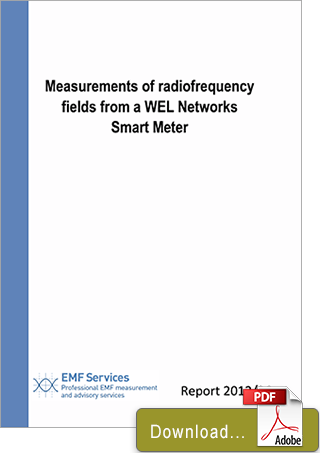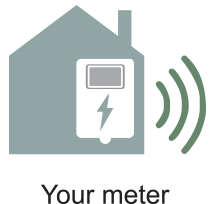 A study into the potential health effects of radio frequency emissions from advanced meters
A study into the potential health effects of radio frequency emissions from advanced meters
About EMF Services and the author of this report
EMF Services is a division of Monitoring and Advisory Services NZ Ltd (MAASNZ), and provides professional measurement and advisory services related to possible health effects of electromagnetic fields (EMFs), such as the extremely low frequency (ELF) electric and magnetic fields found around any wiring, appliances or infrastructure carrying mains electricity, and the radiofrequency (RF) fields produced by radio transmitters and some industrial equipment.
Martin Gledhill has an MA degree in Natural Sciences (Physics) and an MSc in Medical Physics. He is a member of the Australasian Radiation Protection Society and of the Bioelectromagnetics Society. Before forming MAASNZ he was head of the non-ionising radiation section at the National Radiation Laboratory of the New Zealand Ministry of Health. In this position he provided advice to central and local government, the public and industry on the health effects of EMFs, and carried out measurement and assessment services in this area. This work included providing policy advice to the Ministries of Health and the Environment, preparation of public information material, presenting expert evidence at local authority and Environment Court hearings, and assessing exposures to EMFs by both measurements and calculations.
Introduction and summary
This report describes measurements of radiofrequency (RF) fields from a WEL Networks advanced meter. The advanced meter incorporates a Silver Spring Network Interface Card (NIC) which communicates with the metering network by radio. The NIC includes a second transmitter which can communicate with a Home Area Network, but by default this functionality is disabled and it was not tested. The measurements were made in November 2012.
Measurements behind a typical WEL Networks metering installation (meter installed on an outside wall inside a metal meter box with glass viewing panels) showed that the exposure measured during the day (averaged over 30 seconds) was normally less than 0.0005% of the limit allowed for the public in NZS 2772.1:1999 Radiofrequency Fields Part 1: Maximum exposure levels – 3 kHz to 300 GHz. The highest exposure averaged over 30 seconds was less than 0.003% of the public limit.
The peak instantaneous exposure (ie the exposure while the meter was transmitting) measured in this setting was 0.18% of the public limit. On average, the meter was transmitting 0.095% of the time, equivalent to a total transmission time of one minute 22 seconds per day. The highest duty cycle (proportion of time during which the meter transmits) measured over any 30 second interval was 3%.
The peak instantaneous exposure measured 30 cm from the front of the meter was 13% of the public limit in the Standard. If the meter were operating with the measured worst-case duty cycle of 3%, the time-averaged exposure at this point would be 0.39% of the public limit.
Full details of the measurement techniques and results are contained in appendices to this report.
- EMF Services, Professional EMF measurement and advisory services report 2012/36



 Mk10D
Mk10D